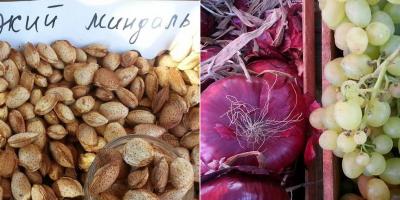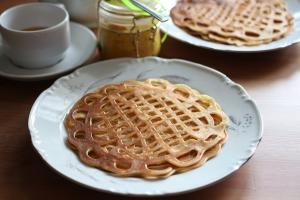Coreopsis is a sun-loving herbaceous plant with bright yellow flowers that light up the garden until frost. What makes this flower especially valuable is easy care behind it, many varieties, easy propagation and the ability to grow in open ground. Coreopsis is widespread in the temperate climates of the United States and South America, Africa and Hawaii.
Meet in Russia decorative varieties plants that received the names “yellow daisy”, “Parisian beauty” and “lenok”.
The coreopsis flower looks like a subshrub, with bright yellow flowers, which are popularly called “gypsies” or “maiden eyes”.
The stems of the flower are straight, highly branched, and grow up to one meter in height. The leaves are simple, dissected or palmate, narrowed or lanceolate, symmetrically arranged. They are concentrated in the lower part of the stem, at the base of the shoot. 
Flowers are collected in baskets on long peduncles. The corolla looks like a tube, with tongues of petals growing from its end.
In the center the flower is colored yellowish, and the edges are bright yellow, pink, terracotta, crimson or brown.
The open bud reaches 3-6 centimeters in diameter. Flowering begins at the end of June and continues until frost.
The fruit of coreopsis is a small and shiny capsule containing many small round seeds. By appearance it resembles a bug, which is where the name of the flower comes from, because in Greek “koris” is a bug, and “opsis” is a species.
Coreopsis varieties
In the modern world there are more than 100 known various types, but usually no more than thirty are used.
- Coreopsis annual
Location. A prerequisite for the proper development of coreopsis is open sun, since if you plant it in the shade, it will stretch upward. And partial shade can be useful for whorled and pink coreopsis.
Flower propagation
All types of coreopsis can be propagated in the following ways:
- Propagation by seeds. Seeds for planting can be purchased at the store. For perennial varieties, seeds are planted in open ground before winter or spring. They will bloom from the second year. Annual varieties are planted for seedlings in March.
Shallow containers are filled with soil, and the seeds are evenly distributed over the ground, pressing a little with a board. The container is watered and covered with glass or film to create a greenhouse effect, and placed in warm room, without exposure to the sun. 
After 10 days, the first entrances appear and the glass can be removed. After the second leaf appears on the coreopsis, it is transplanted into separate containers or tophohumus cups.
Seedlings may suffer from blackleg disease, so it is necessary to maintain a moisture regime. Planting in open ground takes place at the end of May, after a week of hardening in air for several hours a day.
Seedlings are planted at a distance of 15 to 30 centimeters, at a shallow depth. Coreopsis grown in this way will bloom in the same year.

Planting and caring for coreopsis
Landing place. Choose a place for planting that is sunny and windless. The soil should be well-drained, without stagnant water and of average fertility.
Excessive soil fertility will only harm coreopsis; it will lose its decorative appearance, growing large leaves instead of flowers. Also, the soil should not be overly acidic.
Perennial bushes grow over several years, and it becomes necessary to periodically replant and divide them. This is usually done in the spring. 
Watering plants. You don't have to water the flowers very often. The signal for watering is the cracked soil around the plant, but even then watering should not be abundant. Varieties with red and red varieties require much more moisture. pink flowers. After watering, the soil around the roots needs to be slightly loosened.
Feeding. Fertilizing of plants is carried out extremely rarely and only on very poor soils, applying them once a year in the spring. In this case, you can only use mineral fertilizers, organics are not desirable.
Very tall flower stems need to be tied up because they can break under gusts of wind. And if you trim off the faded buds, the coreopsis may bloom again in the same year.
Wintering. In winter, the shoots are cut off almost at the very root. But large-flowered coreopsis cannot be pruned, otherwise it will not survive the winter cold.
In the northern regions, you can cover flowers with spruce branches and fallen leaves for the winter, for additional protection. IN middle lane and the southern one does not require this; coreopsis tolerates frost well.
Diseases and pests
Coreopsis is rarely attacked by pests and diseases. He has a strong immune system, but sometimes illnesses appear.

Use in landscape design
Long and bright flowering makes coreopsis a frequent guest in flower beds and flower beds of gardens and summer cottages. It can be perfectly used as decoration for paths and borders.
Beautiful combinations are obtained when using coreopsis with, rose and rubikeria, their flowering time coincides, and the resulting bright and fragrant compositions are obtained.
Together with annual plants, the use of tall coreopsis allows you to form bright carpets. A low-growing varieties Look great in hanging containers behind windows. 
For Mediterranean-style landscaping in narrow yards and long areas, this plant is a good choice. Interesting solution It could be planting coreopsis along the perimeter of the site along with dahlias, irises, and marigolds.
By planting in individual islands or in small containers, you can achieve unusual color accents.
Inside the house, you can place flowers in tall vases and decorate the rooms with a splash of color. Coreopsis, when cut, stands in water for quite a long time, which instills in it even greater love.
Coreopsis is an ideal plant for decorating personal plots, and with proper care, it will delight you with its sunny color for many years.
Coreopsis is a herbaceous plant from the Asteraceae family. It is widespread in the temperate climates of both Americas, but due to its unpretentiousness and high decorative qualities, it is widely cultivated by flower growers around the world. Domestic gardeners nicknamed coreopsis “yellow daisy”, “Parisian beauty” and “lenok”. Delicate aerial growth and abundant bright flowering make coreopsis quite popular. Modern ornamental varieties with double or variegated flowers are often planted in gardens.
Description of the plant
The Coreopsis genus includes perennial and annual rhizomatous plants. They have airy, lacy growth consisting of thin, branched shoots. The height of the subshrub is 40-90 cm. The palmate or dissected bright green leaves have a narrowed or lanceolate shape. They concentrate at the base of the shoot and also cover its lower part, growing oppositely on the stem.


















Flowering begins in June and lasts until the first frost. It is very abundant and bright. Flowers of yellow, terracotta, pink and crimson shades have a simple or double shape. They consist of eight linear narrow petals with a jagged end. The diameter of the open bud is 3-6 cm. The lush core is painted in darker, richer shades.
After pollination, flattened seed pods with dry walls ripen. They were the reason for the name of the plant. WITH Greek language Coreopsis is translated as “bug-like.” The fruits of the plant look like bugs. Inside them are small round seeds. There are up to 500 units in each gram of seed material.
Coreopsis species
The plant genus has about 50 species. Conventionally, they can be divided into annuals and perennials.
Annual varieties include the following:

Perennial coreopsis is represented by a wide variety:

Reproduction
All types of coreopsis can be propagated by sowing seeds; perennials can also be propagated by dividing the bush. Seeds are planted before winter or in spring in open ground. Perennial varieties They bloom from the second year of life. To get earlier flowering of annuals, it is recommended to grow seedlings. Sowing of seeds is carried out in early March. To do this, use shallow containers with nutritious garden soil. The seeds are distributed on the surface and pressed using a board. Then the container is covered with film. It is necessary to ventilate and moisten the plants daily.
Shoots appear after 10 days. From now on there is no need for shelter. When coreopsis grows a pair of true leaves, it is picked in separate pots or in a box with a distance of 2 cm. Repeated picking is done when the shoots are 10-12 cm high. It is important not to overwater the flowers, since seedlings often suffer from “black leg”. Planting in open ground is carried out at the end of May. Before this, the seedlings are hardened off for a week by taking them outside for several hours.

Reproduction by dividing the bush is carried out in October or March. It is necessary to completely dig up an adult bush, cut it into several parts so that each has its own roots and several stems. Immediately after division, the bushes are planted in the soil. Flowering will occur already in the year of planting.
Planting and care
Coreopsis can grow in any soil, but prefers light, well-drained soils without stagnant water. Surprisingly, the excessive fertility of the land does not benefit him. The plant may lose its decorative effect, as well as its bright and abundant flowering. The soil should not be too acidic.

Since even bushes of perennial coreopsis grow quickly, every 3-4 years they need to be divided and replanted in new areas. The procedure is carried out in the spring. For planting, shallow holes are dug at a distance of 50-60 cm from each other.
Caring for coreopsis in open ground is not difficult. Plants love sunny, windless places. In partial shade, the stems become more elongated and bare, and flowering becomes less abundant.
Coreopsis needs to be watered infrequently; it tolerates drought well. Only when the ground cracks can you water the bushes with a small amount of water. More abundant watering is necessary for varieties with red or pink flowers. To prevent the soil from becoming crusty, it is loosened after watering. Coreopsis needs feeding very rarely, only on poor soils. They are applied once a year in mid-spring. Usually a complex mineral composition is used. The use of organic matter is undesirable.

Plants with tall, thin stems need staking. Without this, they easily bend and break from a gust of wind. Immediately after flowering, it is recommended to trim off faded buds. Thanks to this, flowers can appear again in the same year.
For the winter, the shoots are cut off at the root, but large-flowered coreopsis does not tolerate autumn pruning and may freeze out in this case. Plants tolerate frost normally without shelter. They may suffer from soil flooding during snowmelt. To avoid this problem, it is recommended to make the grooves in advance. In the northern regions, covering the bushes with spruce branches and fallen leaves will not hurt.
Coreopsis in the garden
In landscape design, coreopsis can be used in solo group plantings in the middle of the lawn. Bright flowers perfectly enliven the area and fill it with color. In a flowerbed, tall plants are planted in the background, then the translucent shoots will be hidden by the shorter neighbors. Coreopsis looks good with dahlias, irises and roses. Low-growing varieties are combined with delphinium, speedwell or petunia. They are planted not only in open ground, but also in containers to decorate balconies and terraces. Cut flowers are used to make bouquets. They last 1-1.5 weeks in a vase.
Coreopsis is a large genus of herbaceous shrubs and subshrubs from the Asteraceae family. Includes about 100 varieties, mainly perennial ornamental crops. However, in areas of the middle zone with an unstable climate, some varieties are grown as annuals. The natural habitat is the American continent. Flowers are widely used in the design of gardens and personal plots, due to the wide variety of inflorescence shapes and bright color palette. In addition, the plants are unpretentious in care and remain in a loose state for a long time.
Varieties
Of the wide range of available species in home and garden cultivation, about thirty are most in demand. Almost all coreopsis are perennial, with the exception of a few. In a general description of plants, one can highlight the advantage of the yellow color of the inflorescences, but pink, red, and with a brown tint are also found. Most have pinnately dissected petals, forming double or simple basket inflorescences. The height of the branching stems varies from 20 to 115 cm.
The flowering period is long, almost all summer, until the first frost.
Varieties often found in garden decoration:
- Golden ball is a spectacular decorative cultivar, with rounded double inflorescences of golden color. The height of the stem reaches 50 cm. It blooms in July, maintaining its beauty until late autumn.
- Ruby Red is a whorled, meter-tall representative with crimson baskets. The leaves are light green, needle-shaped, excessively elongated. Frost-resistant, light-loving, lives a long time without transplanting.
- Golden baby is a compact frost-resistant plant that blooms profusely from mid-July to September. The height of the densely leafed bushes is 40 cm. The inflorescence baskets are terry, golden yellow, 3–4 cm in diameter.
- Thuringia is a large-flowered perennial of the dwarf type (20–25 cm). The flowers are double, spherical, with many feathery petals.
- Moonbeam is a meter-long perennial coreopsis with sessile narrow leaves. Blooms with many white-yellow inflorescences with radiant petals.
- Early Sunrise is a compact perennial 60 cm high. The inflorescences are semi-double, golden yellow, 5–6 cm in diameter. It blooms all summer.
- Roulette - has deep red flowers with longitudinal yellow stripes.
- Golden Severin is a bush with abundant foliage, low-growing, no more than 20 cm high. It blooms with large orange inflorescences.
- Crimson King - approximately stretches up to 30–40 cm in height. Inflorescences of an unusual rich carmine color with a brown tint.
- Red Tiger is a dwarf variety, up to 20 cm tall. Petals in the form of rays are collected in dense rosettes of yellow-red colors.
- Gold Teppich - yellow inflorescences with a bright red center. It blooms longer than usual for perennial coreopsis. The bushes are medium tall, about 40 cm.
- Karmezin Keningin - up to 35 cm tall, with dark flowers color palette(red with brown).
The most popular varieties of coreopsis are presented in the table:
| Name | Description | Visual photo |
| Lanceolate (Coreopsis Lanceolata) | An ornamental plant with a bush height of 55–60 cm. The flowers are simple, with serrated petals. yellow color, with a diameter of no more than 7 cm | |
| Whorled (Coreopsis verticillata) | Densely branching bushes slightly taller than half a meter. They stand out for their thin, needle-like foliage. The buds are in a loose state of a rich yellow hue, simple in shape. The flowering period lasts throughout the summer season. Successfully takes root in one place without the need to change for about 5 years |  |
| Pink (Coreopsis Rosea) | Inflorescences are red or purple in color, consisting of sparse oval petals and a fluffy yellow core. Bushes stretch up to 40 cm in height |  |
| Grandiflora (Coreopsis Grandiflora) | It is represented by strongly branching bushes one meter high. The leaves are entire at the base, dissected closer to the top. Terry large yellow inflorescences with a diameter of 7–9 cm. Does not grow in one place for 2 years in a row even with careful care |  |
| Tinker (Coreopsis Tinctoria) | Blooms together from July to September with yellow-purple flat inflorescences. In the middle there appears to be a dense burgundy ball consisting of many stamens. |  |
| Eared (Coreopsis Auriculata) | Compared to other varieties of dwarf growth. Blooms in June with bright yellow semi-double inflorescences. In good weather it blooms until September |  |
| Coreopsis basic, or Drummond | Quite a rare representative with thin stems 40–60 cm high. The inflorescences are large, 6–7 cm in diameter, with reed petals. Most often yellow in color, with a purple circle around the staminate core. There are specimens with pure red petals. Blooms in July, retains its shape until the end of October |  |

Growing from seeds
Perennial and annual varieties They equally love the sun, but do not tolerate through winds and dampness. Therefore, a site for planting is selected without shading, with drained and non-nutritious soil. Close occurrence groundwater unacceptable, which leads to the inevitable death of the plant.
In the garden, it is preferable to grow from seeds. In regions with a warm climate, sowing is done directly in open ground, in early spring or at the end of summer. In the middle zone, where summer comes a little later, it is recommended to plant seedlings at home. On permanent place growth, it is relocated after the soil has completely warmed up, when the risk of return spring frosts has passed. There are no special requirements for seedling germination. It is important to ensure sufficient light supply and water on time.
Seedlings bloom already in mid-June. When sown by seeds, flowering occurs in mid-July.
During open sowing in spring, the seeds are distributed superficially and covered with a small layer of soil on top. The soil is pre-watered. In autumn, moisture is not required so as not to provoke rotting and freezing seed material. The shoots will not take long to appear (maximum 2 weeks), and without much care. Standard measures: watering, loosening, removing weeds. If you cover the seedlings with film, the sprouts will appear earlier than expected. Dense plantings are thinned out, distributing the bushes at a distance of 30–40 cm among themselves.

Care
After planting in the garden, care involves a number of easy activities:
- The plant is drought-resistant, so abundant watering is only necessary in extreme heat. Moreover, varieties with red and orange inflorescences are more moisture-loving than those with yellow ones. The frequency of moistening is regulated independently, focusing on the condition of the plantings and the top soil layer.
- Fertilizers are applied when the soil is depleted. The procedure is indicated twice during the growing season: in spring and summer. Suitable for any water-soluble mineral compounds: dilute 15–20 g of powder per 10 liters of water. It is permissible to add a limited amount of organic matter. Too much in this regard leads to inhibition of bud setting along with increased growth of leaf mass.
- After flowering, the buds are promptly removed. In this way, the flowering period is extended. The seed pods are cut off without allowing full ripening. Then the plant will not waste energy, and self-seeding is also excluded.
- Tall representatives are tied to vertical supports.
- Coreopsis develop intensively, so every 2–3 years they resort to dividing and replanting bushes.
In mid-latitudes, flowers overwinter without shelter. Preparation consists of autumn pruning stems under the base with a small residual stump protruding 5–10 cm. But large-flowered species are not cut, otherwise harsh winter they will not survive without losses. IN as a last resort bushes are covered with dry leaves or coniferous spruce branches.
The genus Coreopsis, which includes about a hundred representatives, belongs to the Astrov family. It includes both annual species and perennials, all of which are herbs, and most of them are native to the American continents.
These plants have straight shoots that branch well. The foliage is opposite, palmate or pinnately dissected. The flowers are a basket-shaped inflorescence consisting of a small tubular center and surrounding tongues of bright sunny tones.
In our area, these crops are also called “lenok”. Among the abundance of species, about 30 are cultivated. We will discuss some of them below.
Types and varieties
It has a larger bush and inflorescence size than other species. It grows up to 1 m, branches strongly, the lower foliage is solid, but closer to the top of the shoot it begins to dissect. Inflorescences are about 7 cm, bright yellow.
Usually it does not grow in one place for a long time and next year it may simply not grow even with good care.

The height of the bushes is almost half that of the large-flowered one - 60 cm. The inflorescences are also smaller - 6 cm. The flowers are simple, yellow in color.

Withdrawn terry varieties, For example, Golden baby .

A well bushing species, growing a little higher than half a meter. The leaves are thin. The flowers are simple, rich yellow in color; the Zagreb variety is very popular.

Also commonly grown is the variety Ruby Red , having bright red petals.

short perennial species, forming a lush bush. The flowers are small, true to their name, pink in color.

Annual varieties and species
Grows up to 50 cm. The flowers are small, simple - up to 4 cm, usually yellow in color with dark brown splashes.

Reaches a meter in height, strongly branches. There are low-growing varieties up to 40 cm. The inflorescences are 5 cm in diameter, the outer part of the flower is yellow and the inner part is brown, but depending on the variety, the petals can be either yellow or dark purple, close to black.

Popular varieties: Amulet , Bullfinch , Silmaril .

Attractive variety Roulette with purple petals and yellow longitudinal stripes on the petals.

Coreopsis perennial planting and care
Caring for coreopsis, both perennial and annual, is an easy task. Species of both types prefer light, dry areas protected from drafts; partial shade is allowed.
The substrate needs to be light, of medium nutritional value, sandy, drained, to avoid stagnation of water, which is detrimental to coreopsis.
A month before sowing, it is advisable to dig up the area with organic fertilizer.
Sowing of perennials is carried out directly into the ground before winter; it is also possible to sow with the arrival of spring. The distance between rows is maintained at 20-40 cm, depending on the size of the species.
Annuals are sown in the same way, although more often in the spring, although given that this crop reproduces well by self-sowing, there is not much difference.
The seedling method is used less frequently. IN open ground The seedlings are moved at the end of spring, when the night frosts have gone. Before planting, young plants are hardened off. Transplantation from a pot to a flowerbed is carried out together with soil from the pot.
Dahlias are also exotic members of the Asteraceae family. Recommendations for planting and care in open ground, as well as methods of propagation, can be found in this article.

Watering kareopsis
If there is little rain, then watering is necessary. If the flower is grown in a pot, then watering is carried out when the earthen ball is almost completely dry.

Fertilizer for kareopsis
Fertilizers are rarely applied. If the soil is very poor and there is such a need, then apply 15 grams of complete liquid mineral fertilizer once a year; you can add compost, but do not overdo it, as in this case flowers may not appear.
Reproduction of coreopsis
In addition to the generative method perennial coreopsis can be propagated by dividing the bush. This procedure is carried out at the end of April - beginning of May or in September.
Replanting is easy; low-growing varieties tolerate it well, even if they bloom.
An important condition for this procedure is sufficient preliminary moistening of the substrate so that the roots are easier to pull out. In a new location, planting also needs to be done “in the dirt.”
This crop also propagates very easily by self-sowing, so in the spring the flowerbed will need to be cleared of multiple seedlings.
For cuttings, young shoots are cut off in June and rooted in light sandy soil, preferably in a greenhouse.

Diseases and pests
Among the diseases that affect coreopsis are spotting, rust, and fusarium. All of them are treated with fungicidal drugs. Treatment usually has to be carried out repeatedly, and if it does not help, then it is better to destroy the bushes and disinfect the area to protect other crops.
If the foliage becomes deformed, light spots appear on it, the tops of the flower stems curl, and growth becomes slow, then most likely it is a virus. They cannot be treated and the plants will have to be destroyed and the area disinfected.
Beetles or caterpillars usually do not attack coreopsis in large numbers and can simply be removed by hand. If there are still a lot of insects, then you should also resort to chemicals.
According to the description, the coreopsis plant resembles rudbeckia, only its petals are more rounded. Coreopsis got its name from the words koris and opsis (translated from Greek as “bug” and “species”) - the fact is that the small, black seeds of this culture really resemble bedbugs. To our latitudes perennial flower Coreopsis came from South America, and some species are also found in Africa and Hawaii.
Description of species and varieties of coreopsis
This herbaceous plants. No more than 10 species of coreopsis are used in culture, the most common of them are Drummonda and dyeing..


Coreopsis Drummond. It has a highly branched stem up to 60 cm high and a fibrous root. The leaves are pinnately divided. The inflorescences are single, terminal baskets with a diameter of 3-5 cm. The color of the flowers is often yellow with a brown spot at the base, forming a ring around a central dark brown disk. There is a form with dark red flowers and a brown spot at the base. Flowering - from early July until autumn frosts.


In a variety of perennial coreopsis "Golden Crown" especially large golden inflorescences.


"Eli Sunrise" has semi-double bright yellow inflorescences and especially abundant flowering, plants 45 cm high.


Variety "Mistigry" has light yellow inflorescences with a dark ring around a brown center, flowering is abundant and long-lasting.


Coreopsis dyestuff. A plant with a thin, strong, branching stem up to 1 m high. The roots are fibrous. Leaves are opposite. Inflorescences are solitary, up to 5 cm in diameter.
As you can see in the photo, this perennial coreopsis has yellow, orange or dark red flowers with a spot at the base:


Flowering at the same time as the previous species.


In the variety "Dwarf Dazzler" plant height 30 cm with lush and long-lasting flowering, inflorescences more than 5 cm in diameter, yellow-red.
Planting and caring for perennial coreopsis plants
 Coreopsis are quite frost-resistant, light-loving, drought-resistant and unpretentious plants. They overwinter without shelter.
Coreopsis are quite frost-resistant, light-loving, drought-resistant and unpretentious plants. They overwinter without shelter.
When planting and caring for perennial coreopsis, use light soil of average fertility.
Perennial coreopsis are propagated by seeds in the ground or by seedlings, as well as by dividing plants in early spring or August.
When planting, the distance between plants is 30-50 cm. If you want to resume the flowering of coreopsis, use the following advice: when the flowers wither, cut the stem to one quarter in height, the remaining stumps need to be trimmed additionally, feed, after which flowering will resume. In winter, faded stems are cut to the ground.
Tall coreopsis are used for far edge plot, in groups on lawns, on the south side of fences and tree and shrub plantings. They are also very good for cutting - they last in water for a week.
Low-growing ones are used for planting in the foreground of a flower garden in the form of a border or in groups; they are suitable for planting in vases or containers and in balcony boxes with a depth of at least 20 cm. Low coreopsis can be replanted even in full bloom, but in this case the plants are dug up with a clod of earth and planted into well-watered holes.









